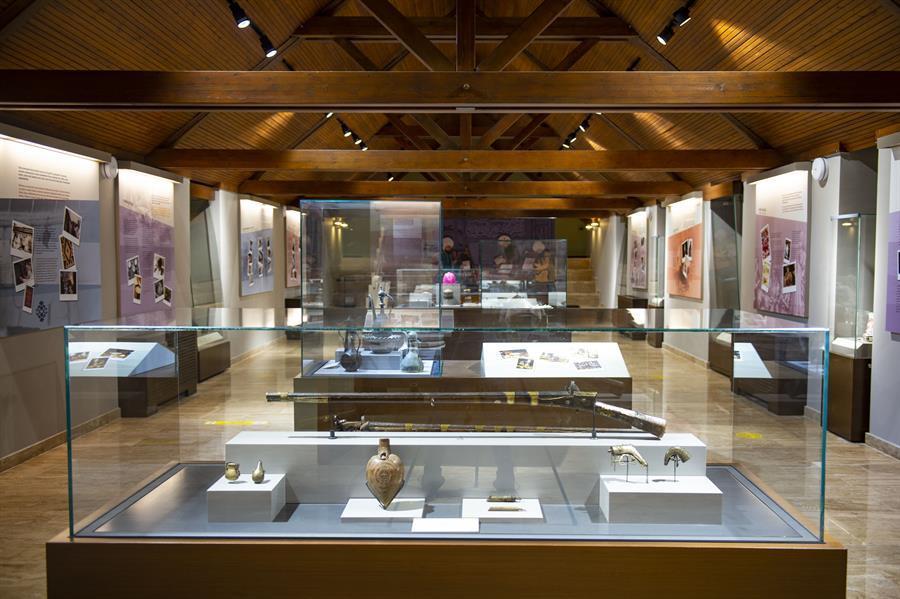
Tunceli Museum, the first of its kind in the eastern province of Tunceli, takes visitors through time with around 2,000 artifacts displayed in its various sections, shedding light on Turkey’s profusely rich history.
Located between Munzur, Hel, Yılan and Sülbüs mountains, Tunceli welcomes many local and foreign tourists with its natural, historical and cultural richness throughout the year.
Tunceli Museum is one of the unique museums of Turkey in which local religious rituals are exhibited using wax sculptures, along with stone tools, terracotta pots and metal artifacts extracted from the city’s oldest historical ruins.
Built in 1936 with German and Austrian architecture, the site was used as military barracks for a while and later underwent extensive restoration in 2019 to turn it into a museum.
The museum, which consists of four blocks with a courtyard of 1,800 meters and an area of 5,805 square meters, has an Alevism, archeology, ethnography sections and a library, unraveling the pages of history in front of its visitors.
Besides the special sacred fireplaces that shed light on the faith culture of the region 5,000 years ago, there are ram-headed and stone tombs that reflect the traditions of the local people in the building.
Some academics working in the field of history have been carrying out scientific research based on these tombstones.
The cultural heritage of the city is protected with thousands of years old historical artifacts and objects that are exhibited in the museum, drawing the attention of not only archaeologists but also history aficionados.
Speaking to state-run Anadolu Agency, Kenan Öncel, the museum’s director, said there were eight different exhibition areas in the museum.
Emphasizing that Tunceli is the least studied area in terms of archaeology, Öncel said the archeological background of the region has started to come to light gradually since 2015.
He pointed out that with the opening of the museum, academics started to visit the city to conduct scientific studies.
“We were able to document that the history of Tunceli has continued uninterruptedly since the Paleolithic period,” Öncel said, adding that new excavations could be made in the region in the next stages.
“We have artifacts from all periods in the museum. We started from the Paleolithic age. We have works showing that there was life in this region some 500-600 thousand years ago,” he stated.
Expressing that he is looking forward to the upcoming tourism season as the director of the youngest museum in Turkey, Öncel said that all infrastructure works have been completed in the museum and is waiting to welcome visitors.